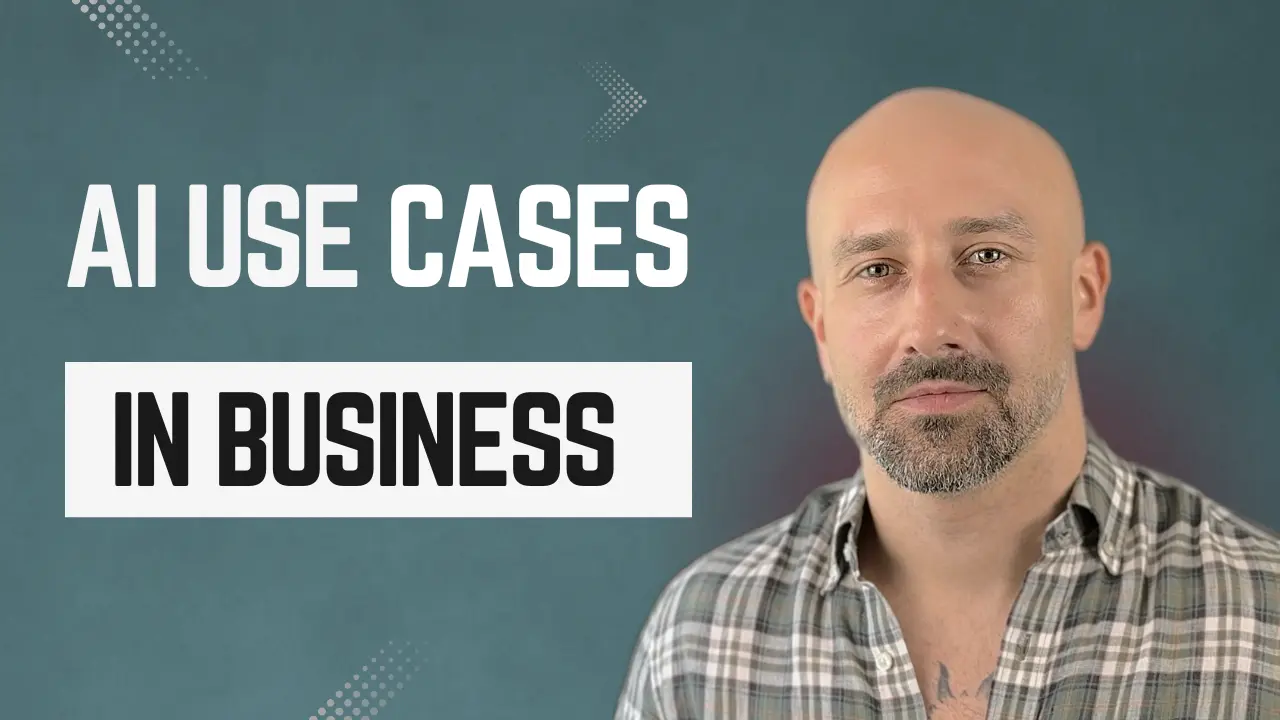
How Businesses Are Using AI with Real-World Use Cases
🎥 Prefer watching instead? Check out the full video →
Ever wondered how businesses are actually using AI to work faster, save money, and grow?
You're in the right place. In this post, we're diving into real-world examples of how companies are getting practical results with AI. Not hype, just what's working.
The AI Moment for Businesses
AI is no longer just a buzzword. It's reshaping how companies operate, from startups to enterprises.
According to a 2024 report by the Small Business Digital Alliance, more than half of small and mid-sized businesses now use some form of AI.
McKinsey found that 42% of companies using AI cut costs, and 59% increased revenue.
In short, if you're not exploring how AI can support your business, you might be falling behind. Let's break down some of the most common ways it's being used today.
1. Content Generation
Most businesses need a steady stream of content: blog posts, emails, social posts, product copy, and more. But creating it manually takes time.
AI speeds that up. You feed it a prompt, and it generates content in seconds. Then your team polishes and publishes.
And it's not just text anymore. AI can generate visuals, voiceovers, short videos, even entire marketing campaigns.
According to Canva, 94% of small businesses using AI for content saw faster and better results. A separate study by Fountain City found that AI can boost content productivity by up to 500%.
I've built tools for a marketing agency that let them generate blog posts in their clients tone of voice, plus matching emails, social posts, and visuals. They tripled their output without hiring.
Just remember, the results depend on how you use it. Clear, specific instructions make a big difference.
If you're creating content regularly, this is one of the easiest ways to get started with AI.
2. Customer Support Automation
If your business talks to customers, you need fast, consistent responses. That's where AI chatbots shine.
They don't sleep, don't take breaks, and answer instantly. Modern bots use generative AI to go beyond canned replies. They understand context, access help docs, and tailor responses.
Take Vodafone. Their bot, TOBi, handles over 1 million chats a day, resolves 70% without a human, and cut cost per chat by 70%.
This kind of automation doesn't just reduce costs. It scales with your business and improves customer experience.
3. AI-Powered Research & Summarization
According to Brainchat, the average employee spends about 20% of their week just looking for information.
AI tools can summarize long docs, pull insights from reports, and answer questions using your internal data, instantly.
Imagine prepping for a client pitch. Instead of digging through decks and email threads, just ask the AI for a summary. You're ready in minutes.
This works for founders reviewing updates, marketers analyzing feedback, and sales teams summarizing calls.
Whether your info lives in PDFs, Slack, Notion, or Google Docs, AI can help you find what you need faster.
4. Sales Outreach & Lead Nurturing
Sales teams spend a lot of time researching leads and writing follow-ups. AI can do most of that automatically now.
It checks a lead's site, LinkedIn, even Google and then writes a personalized message that feels like it came from your team.
No more blasting generic emails. This is targeted outreach at scale.
Before, this kind of personalization meant hiring. Now, it means automation.
A Salesforce report says 91% of small and mid-sized businesses using AI saw revenue growth. If you're doing outbound sales, this is a no-brainer.
5. Internal Process Automation
Every company has repetitive tasks: filling in spreadsheets, logging data, writing reports, drafting notes.
AI can handle all of that. Meeting summaries, auto-filled CRMs, internal emails, even form routing. Once it's set up, it runs in the background.
McKinsey says generative AI and automation could save up to 70% of an employee's time.
Less busywork means your team can focus on meaningful, strategic work.
What All These Use Cases Have in Common
The businesses getting the most from AI aren't chasing trends. They're solving real bottlenecks: repetitive tasks, slow processes, time-wasters.
They're not building from scratch either. They're layering AI into tools they already use: Slack, Notion, Google Docs, CRMs.
And they focus on results. Time saved. Costs cut. Revenue up.
One study showed 43% of businesses adopted AI because it's now easier to use.
You don't need to be a big tech company. You just need a clear use case.
Getting Started with AI
So how do you start?
Start small. Pick one task that's annoying or repetitive. Then try general-purpose tools like ChatGPT, Claude, or Gemini.
Use them to draft content, summarize reports, brainstorm ideas, or answer questions. Think of AI as a co-pilot.
Stick with tools you're already using. Integrate AI into your existing workflows.
And most importantly, track your results. If it saves time or removes friction, you're moving in the right direction.
That's what success with AI looks like. One small win at a time.